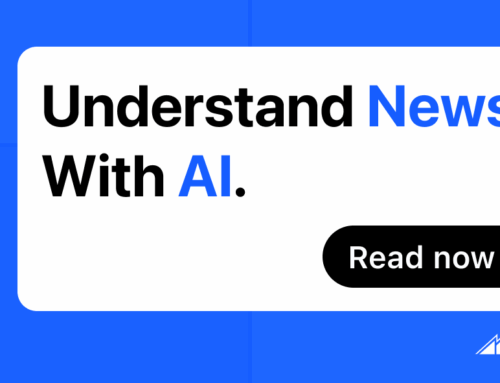Instagram and Facebook Can Now Clone, Dub and Lip-Sync Your Voice in Other Languages
August 20, 2025
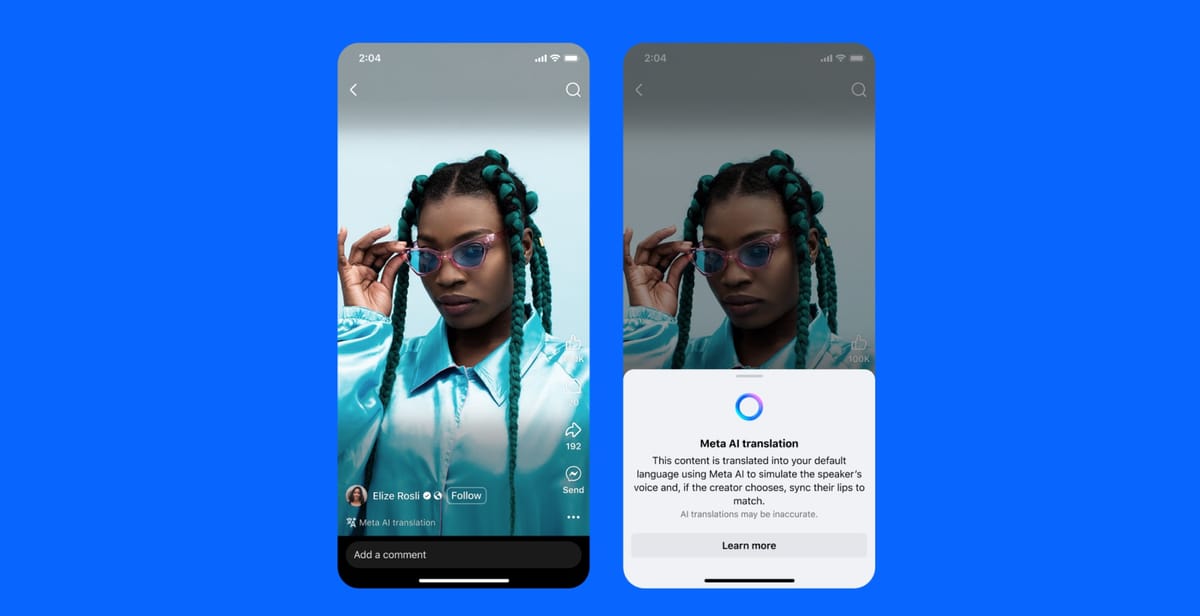
Today, Meta announced that its AI-powered translation tool is rolling out globally across Facebook and Instagram. Creators can now automatically dub their Reels between English and Spanish, with AI mimicking their voice and even syncing their lips so the translation looks—and sounds—just like the original.
Key Points
- Available now for English-Spanish translations on Instagram (all public accounts) and Facebook (creators with 1,000+ followers)
- AI preserves your original voice tone and automatically lip-syncs the translation
- Early tests show 20% boost in engagement for translated content
The feature, which Meta first previewed at Meta Connect, is rolling out today in all countries where Meta AI is available—though notably missing from the EU, UK, and a handful of other regions including Texas and Illinois. If you’re eligible, you’ll see a new “Translate your voice with Meta AI” button when uploading Reels. Toggle it on, and Meta’s AI does the rest.
What makes this different from the janky auto-translate features you’ve probably encountered before is that it’s not just swapping audio tracks. The AI generates synthetic audio that matches the speaker’s voice timbre and lip movements, so it actually looks and sounds like you’re speaking the language. Think of it as a deepfake, but one that’s actually useful and clearly labeled.
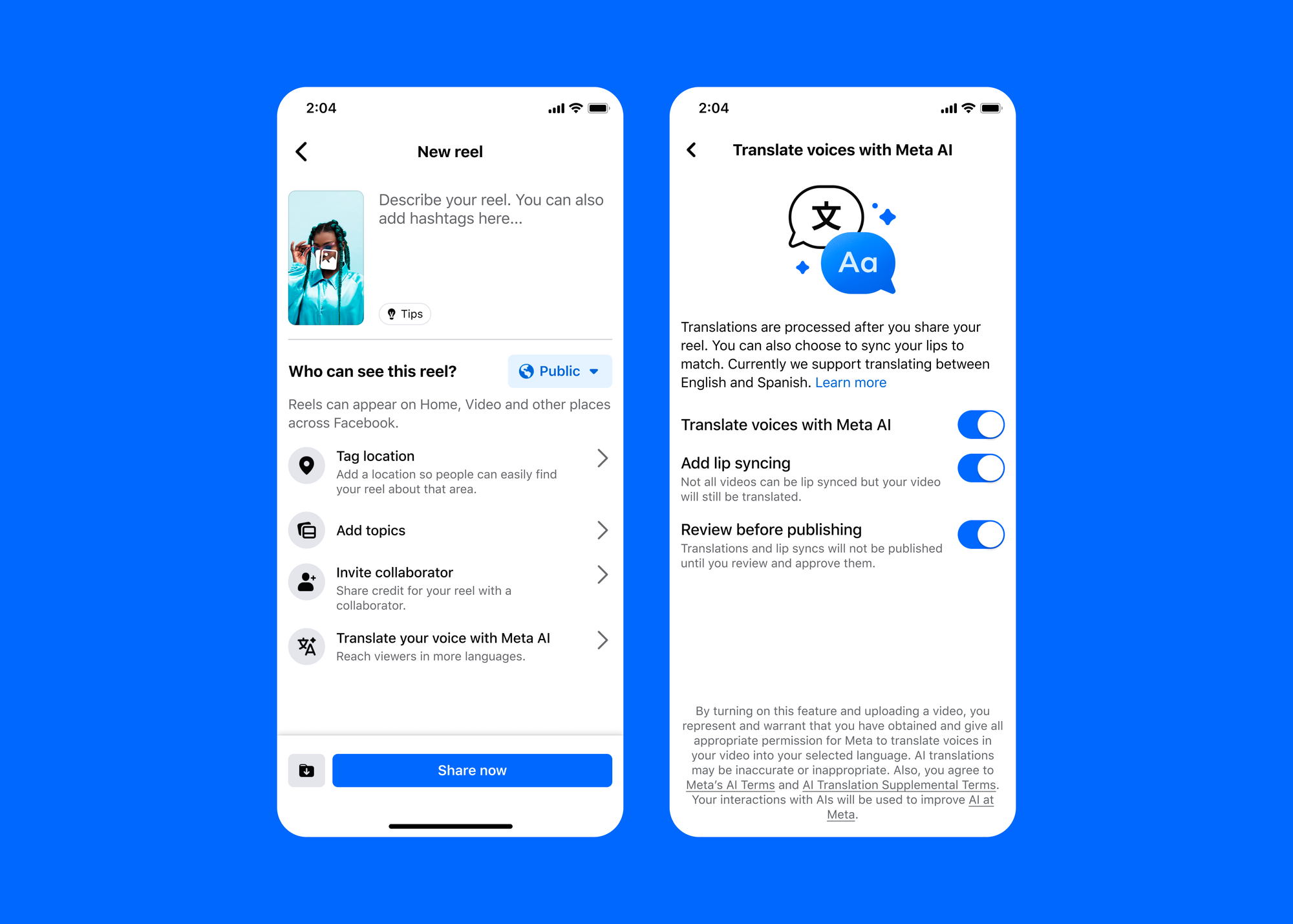
Behind the scenes, this is powered by Meta’s SeamlessM4T model, which the company has been developing since 2023. The tech separates your voice from background music and sound effects, translates the speech, generates a synthetic version in your voice speaking the new language, then adjusts the video to sync your mouth movements. It’s the kind of thing that would’ve taken a team of translators and voice actors weeks to pull off just a few years ago.
For creators, the pitch is obvious: instant access to massive new audiences. Spanish is the world’s second-most spoken language by native speakers, and there’s a huge Spanish-speaking audience on both platforms that English-language creators have struggled to reach. Meta’s betting that breaking down that barrier will keep people scrolling longer and creators creating more.
The company says it’s already seeing results. Early tests indicate a significant boost in engagement, with Meta reporting up to a 20% increase in viewership for translated content. That’s not surprising—if you’ve ever tried watching a Reel in a language you don’t understand, you probably scrolled past it pretty quickly.
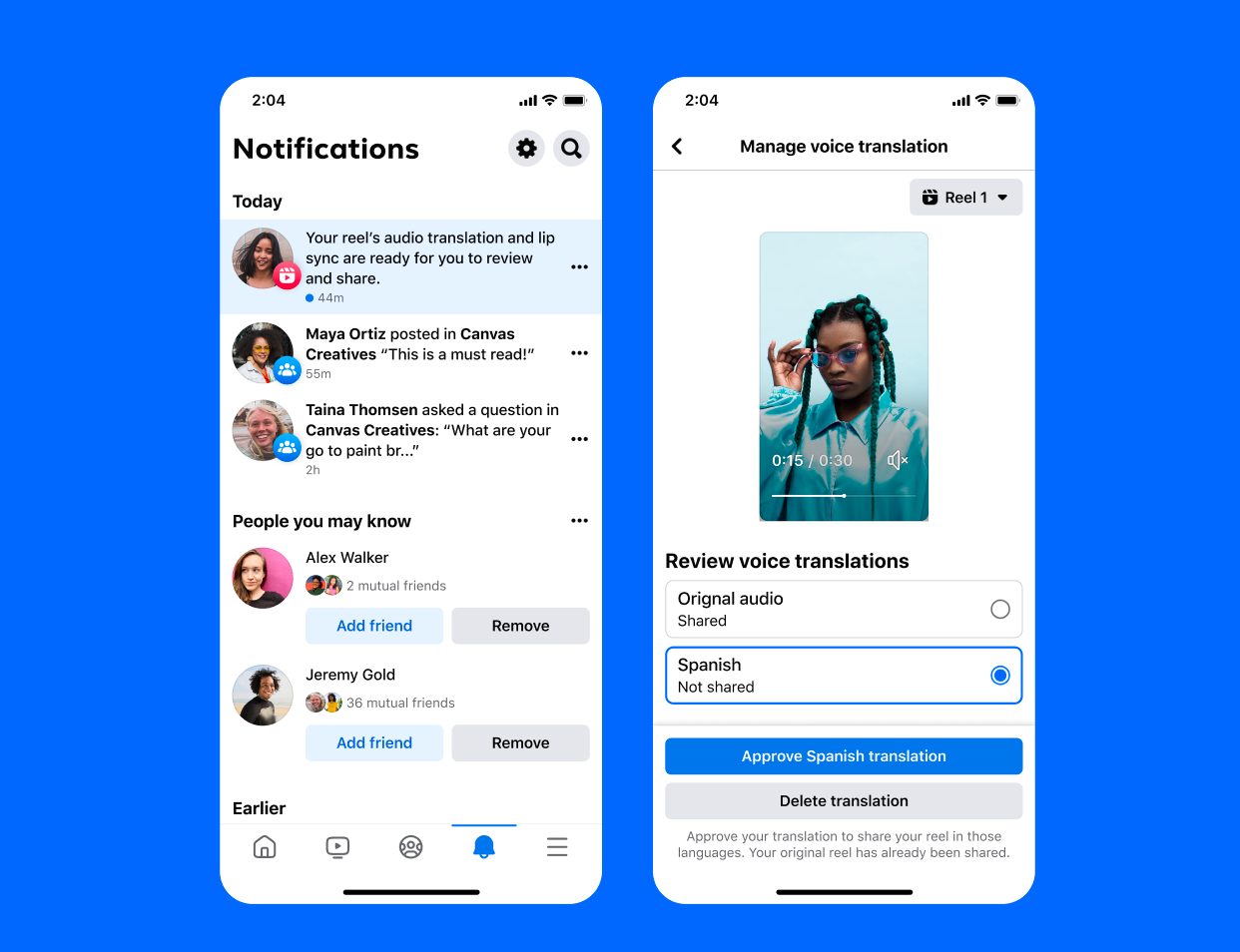
But there’s a darker side to consider. Any technology that can seamlessly make someone appear to say something they didn’t actually say raises obvious concerns about misinformation. Meta says translated videos will be clearly labeled with an indicator showing they were “translated with Meta AI,” and viewers can always switch back to the original audio. Whether that’s enough to prevent confusion or deliberate misuse remains to be seen.
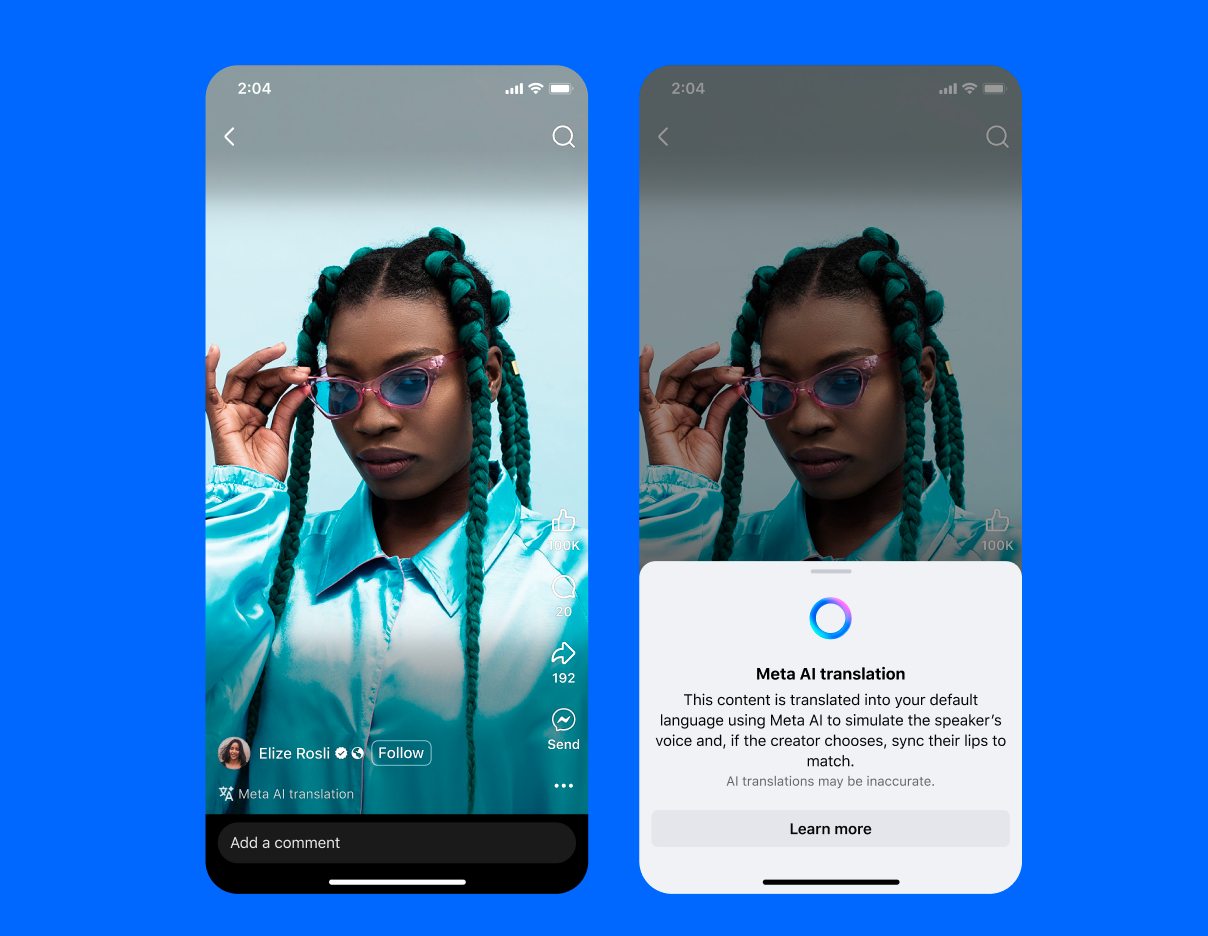
There’s also the question of accuracy. Meta’s announcement notes that the tool works best with “face-to-camera videos” where speakers talk clearly without covering their mouths. Background noise and multiple speakers can trip it up. And while the company hasn’t detailed how it handles cultural context or idioms, anyone who’s used Google Translate knows that literal translations can sometimes completely miss the point.
For now, creators maintain control—you can turn translations on or off for each video, preview them before publishing, and remove them later if needed. You can even upload your own translated audio tracks if you prefer to handle the dubbing yourself, though that defeats the purpose of the whole AI automation thing.
Meta says more languages are coming “in the future,” though they haven’t specified which ones or when. Given the technical complexity and the need to train models for each language pair, don’t expect Mandarin or Arabic translations next week. But if this initial rollout goes smoothly, it’s easy to imagine a future where language barriers on social media essentially disappear.
The real test will be whether viewers actually want this. YouTube users have already been complaining about auto-dubbing being turned on by default, with many preferring subtitles to AI voices. Meta’s implementation might be slicker, but there’s something uncanny about hearing your favorite creator’s voice speaking a language they don’t actually know.
Still, for creators trying to grow globally, this is huge. No more paying for translation services, no more limiting your audience to people who speak your language, no more missing out on trends happening in other parts of the world. If that sounds good to you, you should try it out: make sure your Reels are face-forward, quiet, and clear. Watch those foreign-language views tick up.
Search
RECENT PRESS RELEASES
Related Post

